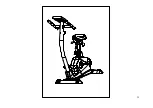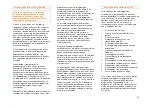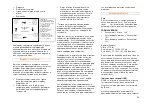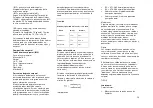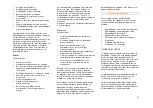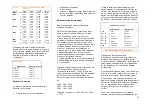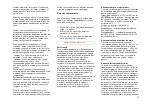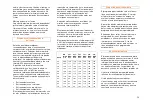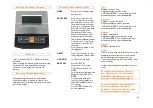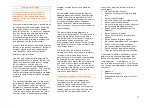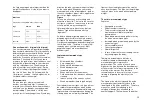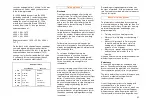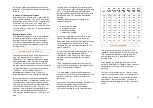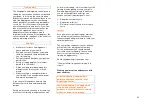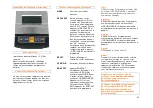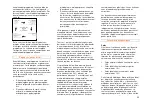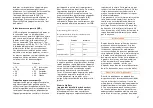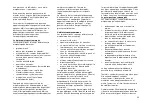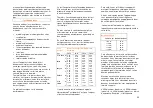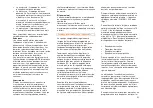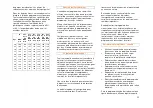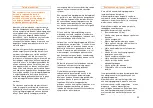
40
not everybody can have the perfect body, often
remain frustrated.
Endomorphe type
Features:
•
Round shapes, holding fat
•
Width shoulders, width pelvis (due to
overweight)
•
More equal distribution of the weight in
comparison to the other 2 types
•
Average figure
•
Very suitable for performances aimed at
power and endurance
•
Easy food insertion and slow digestion
make it easy to gain weight
•
Slow pulse in rest, normal blood pressure
(for active types)
Power, endurance and mobility are the
greatest trumps of the endomorph. Only the
weight, often too high, can be an interference
in some situations. Therefore he must pay
attention to his food, healthy and adapted to
his needs, emphasizing endurance to stabilize
his weight.
Taking into account the beauty ideals of this
moment, the figure of the endomorph type is
not suitable. But above features also show that
the active endomorph has the right talents for
a good health and a sportive attitude. If the
endomorph takes into account his genetic
potential, a few extra pounds, can not harm
him.
Endurance test
An endurance test may not be executed in
following circumstances, except when it is
done under medical supervision:
•
Serious and chronic illnesses of the
respiration
•
Illnesses with fever attacks
•
Infectious diseases
•
Serious increased blood pressure
•
Disorders (ex. of the heart or longs)
•
Infections
•
Taking of medicines (betablockers)
•
When you aren’t feeling well
The most know endurance test which is used
in sports is the “Cooper test”. In this test you
have to run as hard as you can for 12 minutes
and run as much kilometers as you can on an
flat underground.
Even it’s aim is not to stop, you can slow down
and walk. The covered distance is noted and
compared with the numbers in the Cooper
chart. This chart gives us more information
about your performances.
The benefit of this test is that you can do the
test whenever you want, you only need a
chronometer and a course with a fixed
distance.
The disadvantage of this test is that you need
some running experience to become a good
result. You may not take this test if you are not
feeling well (tiredness, feeling unwell, etc…)
Cooper
Test
Data in km, M = male, F = female
Age
20-29
30-39
40-49
50-59
Very well
M
2,64-
2,81
2,51-
2,70
2,46-
2,64
2,32-
2,53
F
2,16-
2,32
2,08-
2,22
2,00-
2,14
1,90-
2,08
Well
M
2,40-
2,63
2,34-
2,50
2,24-
2,45
2,10-
2,31
F
1,97-
2,15
1,90-
2,07
1,79-
1,99
1,70-
1,89
Average
M
2,11-
2,39
2,10-
2,33
2,00-
2,23
1,87-
2,09
F
1,79-
1,96
1,70-
1,89
1,58-
1,78
1,50-
1,69
Weak
M
1,95-
2,10
1,89-
2,09
1,82-
1,99
1,65-
1,86
F
1,54-
1,78
1,52-
1,69
1,41-
1,57
1,34-
1,49
Too
weak
M
<1,95
<1,89
<1,82
<1,65
F
<1,54
<1,52
<1,41
<1,34
You also can take another endurance test: the
“
Harvard-Step-Test. For this test you need a
hear rate monitor, a chronometer, a stair or
bench. The height of the stairs or bench
depends on your length.
Harvard-Step-Test
Height in cm
Height of the step
<152 cm
30 cm
< 160 cm
35 cm
< 175 cm
40 cm
< 180 cm
48 cm
> 180 cm
50 cm
To execute this test, step down and up the
bench or stairs every 2 seconds. This makes
30 times/minute up the bench, which gives a
total of 120 up –and down steps. Whether you
change leg or always use the same leg, this
has no effect on the result. Measure your
heart rate after 4 minutes. When you are done
with the exercise, take your pulse after 60
Summary of Contents for M-430
Page 1: ...1...
Page 2: ...2...
Page 7: ...7 DKN DKN 2 DKN DKN DKN...
Page 15: ...15 DKN 140 300 1 2...
Page 16: ...16...
Page 17: ...17...
Page 18: ...18...
Page 19: ...19...
Page 20: ...20...
Page 21: ...21...
Page 22: ...22...
Page 23: ...23...
Page 24: ...24...
Page 25: ...25...
Page 26: ...26...
Page 89: ...89 5 35...
Page 92: ...92 80 90 12...
Page 94: ...94 4 6 1 3 5 6 12 400 220 70 85 60 70...
Page 98: ...98...
Page 99: ...99...
Page 100: ...100...

